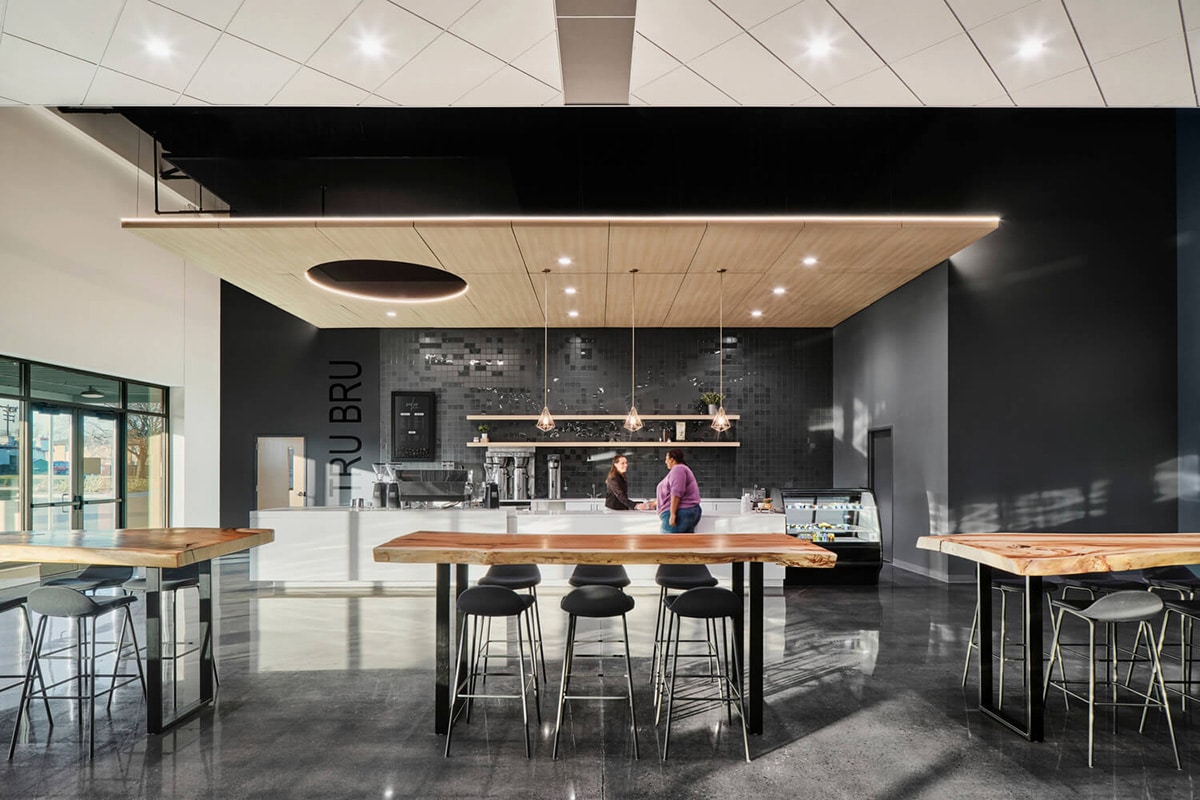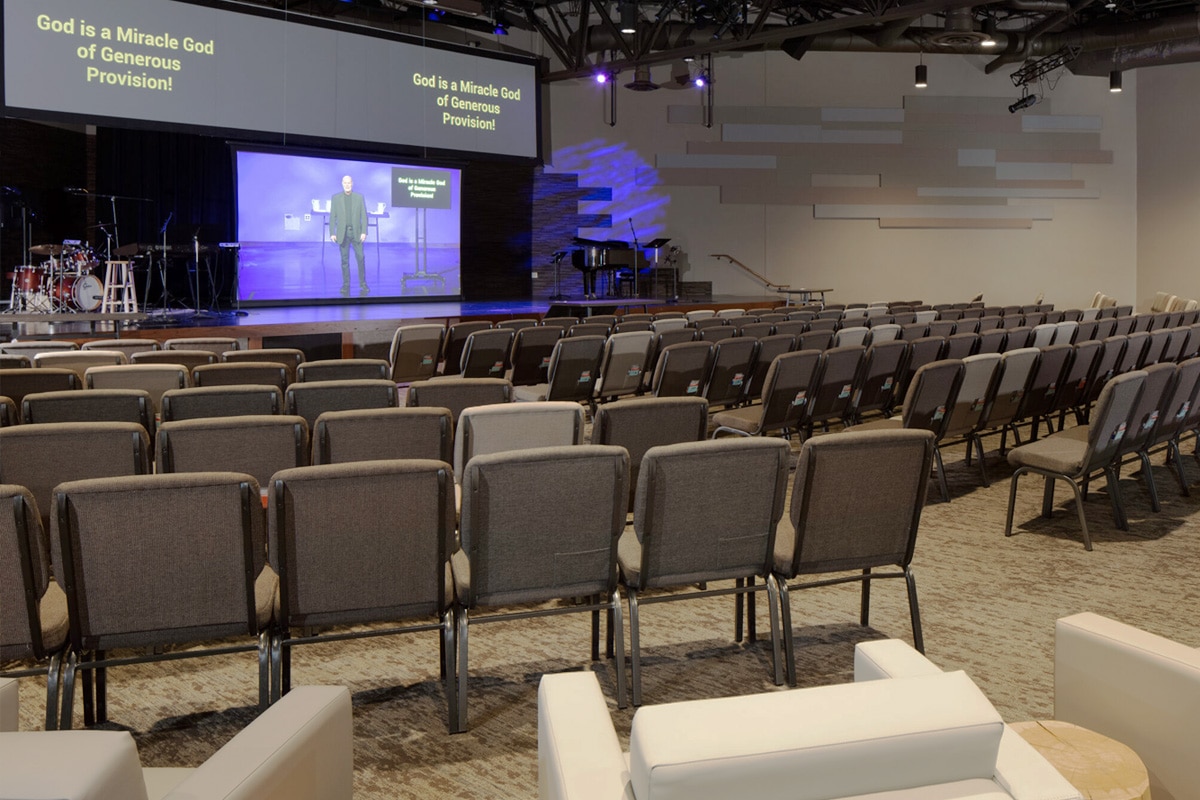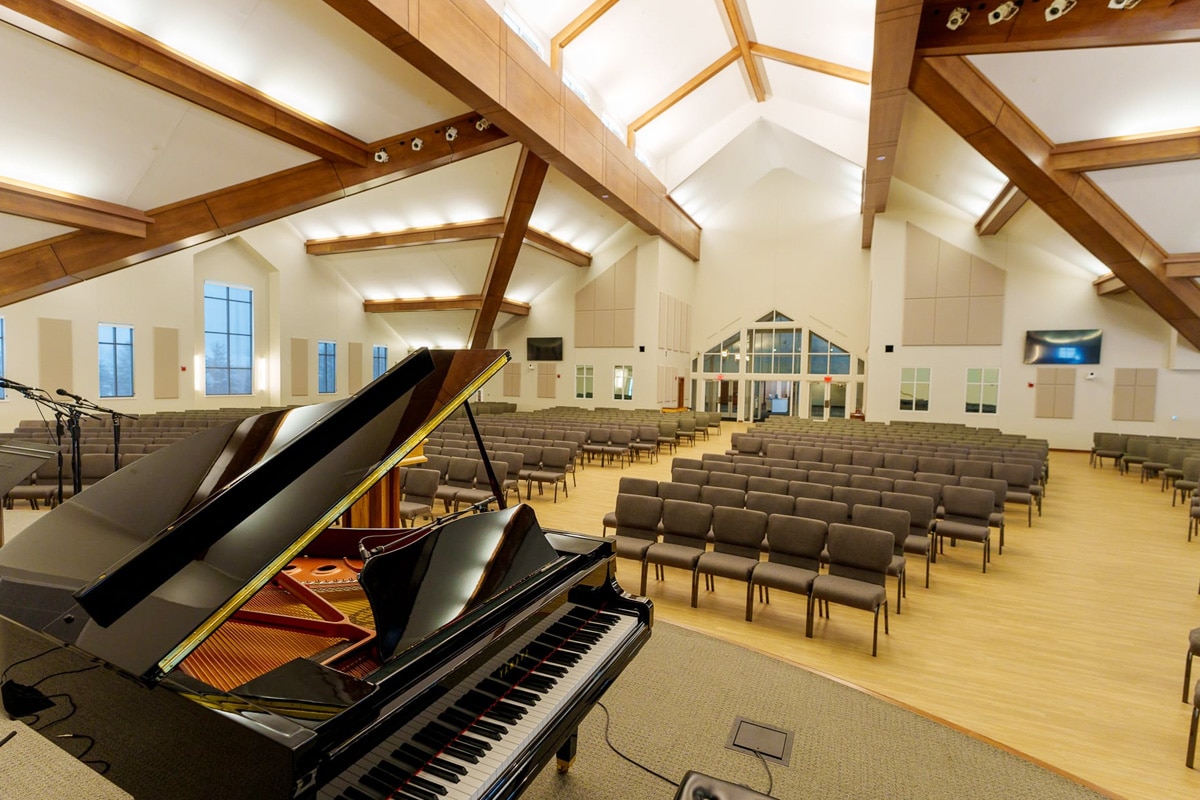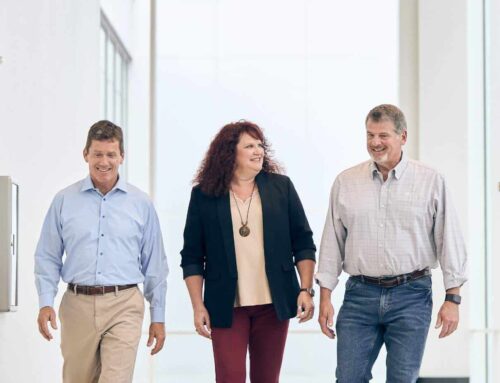“Well, looks like we’re back in style!” Pastor Joel laughed as he looked at his 75-year-old church building in the middle of a quaint neighborhood.
Huge, cathedral-like windows adorned the northern wall. A wide-open sanctuary with a highly vaulted ceiling welcomed worshippers and provided space for remote workers.
Some repairs were needed, but the community didn’t have the budget for full-scale renovations in their church building. The previous generation couldn’t afford to hire a construction company specializing in church architecture.
“Turns out, if you just wait long enough, your outdated building might become fashionable again!”
Joel isn’t passive or lazy. He understands that all buildings require repairs and maintenance. He’s also eager to embrace emerging technologies that enhance church buildings’ ability to serve people.
Church design trends are constantly evolving, sometimes repeating. 2025 has the potential to position church buildings as a refuge and resource for their community.
If you’re looking for some church interior design inspiration for your church building – you’ve come to the right place!
What Defines Church Architecture Today?
Modern church architecture in 2025 captures the spirit of faith and function. Some enjoy a contemporary design with layouts to serve the community’s various needs. Some prefer a more traditional atmosphere, while others prefer a blend of both.
7 Church Design Trends Making Waves in 2025
In many ways, the church design trends of 2025 will blend the best of the past with the opportunities of modern technology and culture. Here are the top seven trends forging a new path for the future of the faithful.
1. Modern Church Design That is Inviting, not Foreboding
Cultivating spaces that invite community is at the top of the list for 2025.
- Location: Churches are looking for locations in well-trafficked areas, a shift from when they sought land removed from their community.
- Indoor/Outdoor Spaces: Functional outdoor areas with convenient access to the church building are being developed to foster a welcoming environment.
- Removal of Commercial Kitchens: Churches maximize square footage by removing underutilized and expensive functions like commercial kitchens. This frees up space and money while embracing innovative opportunities for hospitality.
- Intentionality with Kids’ Spaces: Churches are creating engaging, family-friendly environments to connect with their communities and boost post-COVID attendance.
Lakewood Baptist Church in Pewaukee, WI
Lakeland Community Church, for instance, transformed an old worship space into a public children’s area, attracting 80,000 visitors and growing their community by 25%.
2. Flexible, Multipurpose Interior Design for Churches
Many churches are capitalizing on the seemingly endless opportunities their buildings provide. A church construction company can help transform a singular space for multiple purposes.
- Flexible Seating: Churches are rearranging their worship spaces to host more than weekly worship gatherings using chairs instead of pews.
- Collaborative Office Space: Cubicles and isolated offices are being replaced by community-oriented workspaces. This provides an opportunity for collaboration among church staff, other businesses, and leaders in the community.
- Local Hangout Space: People crave community like never before, and churches are responding. Many places display community art, create cozy corners for coffee and books, and provide public seating for private conversations.
3. Church Design with Technology in Mind
Jesus commissioned His followers to reach “the ends of the earth” with the gospel. Today, technology allows churches to fulfill that mission in extraordinary ways.
Streaming services help connect congregants who can’t attend in-person worship on their terms for their particular situation. This extends the church’s reach to homes, hospital rooms, or wherever the community member is confined.
Smart technology can simplify daily operations, such as automating thermostats and lights. Remote access tools enable leaders to monitor security systems from anywhere.
Security innovations are also transforming church design. Keycard access systems and advanced surveillance cameras streamline a safe environment for worshippers and children-specific spaces, allowing the community to focus on their faith without distraction.
Modern worship spaces are being built with technology at their core, from high-quality AV systems to digital screens that display lyrics, sermon notes, and multimedia.
4. Steward Creation with Eco-Friendly Church Design
Energy-efficient and environmentally conscious choices are at the forefront of modern church design. In 2025, churches will utilize solar panels, install EV charging stations, install large windows for natural lighting, and more.
Church construction companies can help churches take steps to go green. Funding is available to assist churches in making significant, eco-friendly adjustments. But churches demonstrate their stewardship of the earth in numerous, smaller ways.
HarperCollins Christian Publishing offers 17 simple suggestions to empower churches to go green, from recycling bulletins (or utilizing digital bulletins) to planting trees or gardens.
5. Create Clarity and Inspire Worship with Simplicity in Church Design
Minimalism is having its moment, much like how Scandinavian design has influenced modern furniture and home decor (think IKEA). With its clean lines, functional beauty, and focus on what truly matters, this style resonates deeply with the modern mindfulness movement and its inspiring church interior design, too.
Churches are embracing simplicity in 2025 to better care for people and maximize their impact.
Just as a clutter-free home allows for peace and focus, a well-thought-out, decluttered church space invites transcendence without overstimulation. Additionally, a clear and welcoming design helps visitors feel at ease. After all, as people say, first impressions matter.
6. Prioritizing a “Come As You Are” Environment in Church Design
A truly welcoming church design goes far beyond physical spaces. It’s about creating an environment that radiates acceptance and makes every person feel valued and loved. At its core, it reflects the heart of the Christian message: extending an open invitation to all, regardless of where they’ve been or who they are, to experience God’s grace.
Adding ramps, extra-wide doorways, and accessible bathrooms isn’t just practical; it’s a way of saying, “We see you, and we’re ready for you.” These thoughtful details open doors (literally and figuratively!) for everyone to participate.
Similarly, sensory-friendly spaces act as soft corners for those who need a break, offering a peaceful refuge amidst the noise and activity—much like that quiet bench tucked away in a bustling park.
Altogether, these choices aren’t just design strategies but acts of care and hospitality. Every ramp, every quiet room, every nod to cultural heritage says, “You are welcome here.”
7. Design for Community Impact
Modern church architecture redefines how churches serve their communities, blending functionality with compassion invitingly and purposefully. These spaces are no longer just for worship—they’re transforming into places of care and connection.
Thoughtfully designed meeting rooms and multipurpose halls can host legal clinics, personal counseling sessions, financial counseling sessions, and housing assistance programs, letting the community know that help is never out of reach. Modern designs also reflect collaboration, with open layouts that make it easier for churches to collaborate with local non-profits, schools, and healthcare providers.
These modern buildings prove that architecture isn’t just about aesthetics—it’s about impact, turning structures into places of hope and unity. After all, the best-built churches don’t just stand; they serve.
Embracing Change with Catalyst Construction
Church architecture is evolving to serve both worship and community life in 2025 and beyond. Catalyst Construction is at the forefront of this transformation, blending traditional charm with modern innovation to create inspiring and functional spaces.
We build on purpose. Whether envisioning a new building, renovating an existing one, or creating areas to make unforgettable first impressions, our purpose is to help you make the most of your vision and resources.
Reach out to us today for a complimentary consultation, and let’s build a church that stands the test of time.










